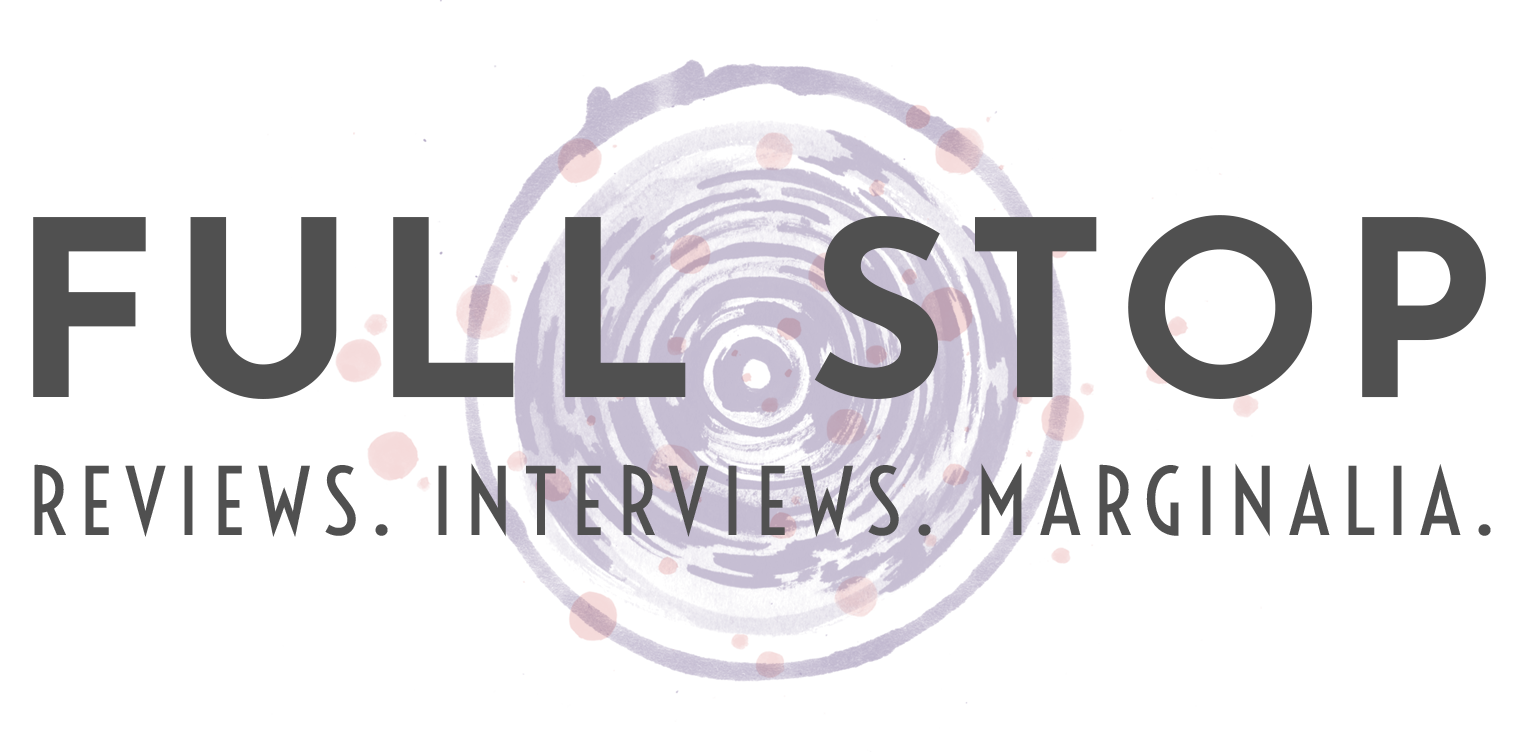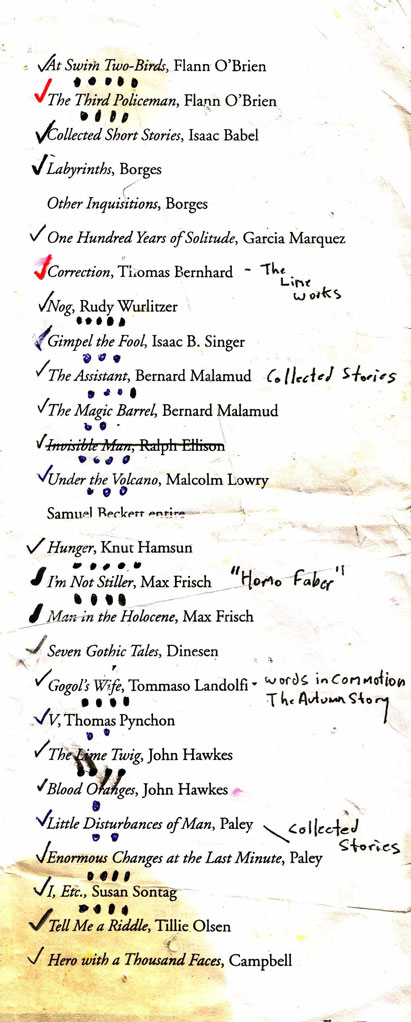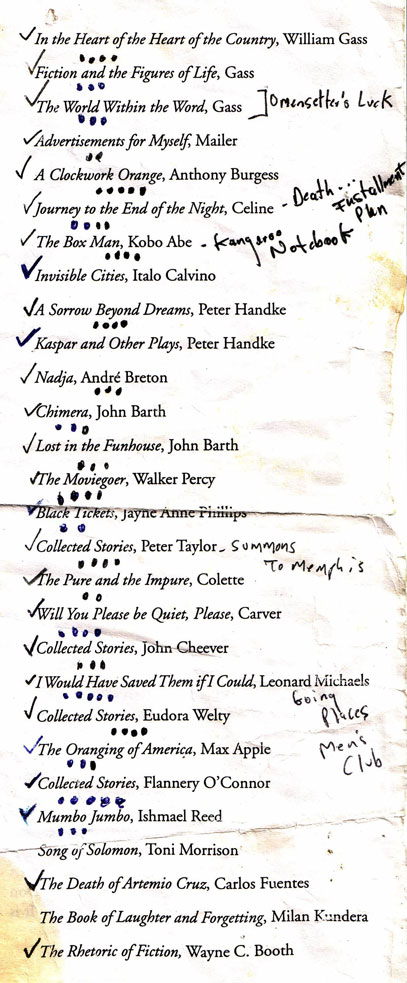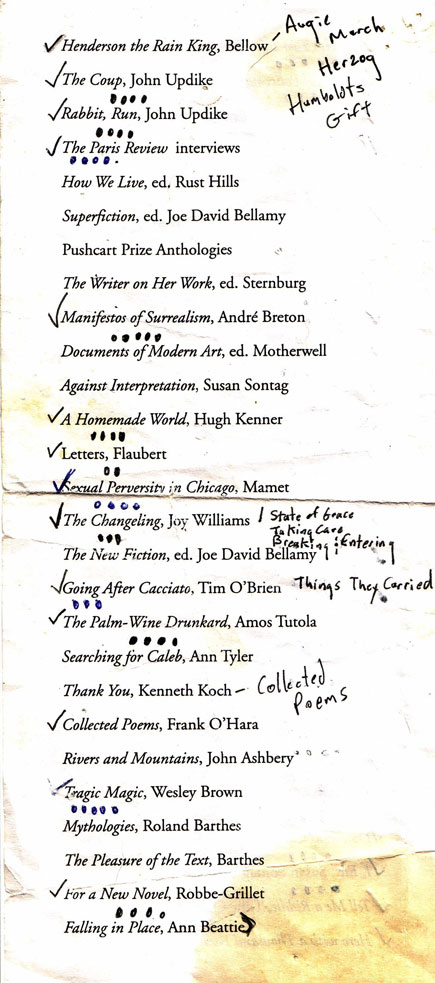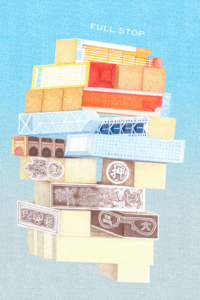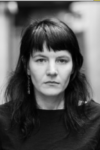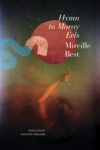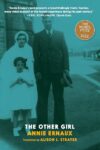I’ve been drawn to lists of books that authors recommend for about as long as I’ve been taking fiction seriously. Over time, this interest has evolved into something critical — a study of taste and influence — but when it began it was pretty mystical: I think some part of me felt that if I read the books others read I would take on some of their power. Which is, I must admit, a pretty silly thing to think.
This morning I was forwarded Barthelme’s list, which has somehow evaded me since it was published in The Believer in 2003. The list is really fascinating as a reader, a critic, and a writer.
In the fantastic accompanying essay, Kevin Moffett takes us through a summer he spent chipping away at the list and makes some pretty sharp critical observations. An excerpt from the essay and the list are after the jump.
If the list’s books are skewed toward Barthelme’s particular obsessions—one of the entries is “Beckett entire”—this is only to its credit. Most are novels. All but two of the books, Knut Hamsun’s Hunger and Flaubert’s Letters (numbers 15, 40), were written in the twentieth century, most in the past thirty years. And all have that dizzying sense of otherness and surprise common to great books, an affluence of vitality. There’s not a dull read in the group: Wesley Brown’s Tragic Magic and Max Frisch’s I’m Not Stiller (numbers 50, 11), the former the story of a black conscientious objector during Vietnam, the latter a layered account of denied identity ….
Difficult books inhabit the list, too. Thomas Bernhard’s Correction (number 7), for example, paragraphless, with dense, pages-long, self-negating sentences, which move with the spiraling locomotion of thought; and Andre Breton’s Nadja (number 65), a mystifying short novel accompanied by mystifying photographs. John Hawkes’s The Lime Twig (number 21), which reads like a traditional novel thrown into a wood chipper and reassembled.
This post may contain affiliate links.
